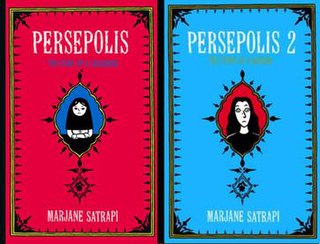
Epilepsy is a group of non-communicable neurological disorders characterized by recurrent epileptic seizures. An epileptic seizure is the clinical manifestation of an abnormal, excessive, and synchronized electrical discharge in the neurons. The occurrence of two or more unprovoked seizures defines epilepsy. The occurrence of just one seizure may warrant the definition in a more clinical usage where recurrence may be able to be prejudged. Epileptic seizures can vary from brief and nearly undetectable periods to long periods of vigorous shaking due to abnormal electrical activity in the brain. These episodes can result in physical injuries, either directly, such as broken bones, or through causing accidents. In epilepsy, seizures tend to recur and may have no detectable underlying cause. Isolated seizures that are provoked by a specific cause such as poisoning are not deemed to represent epilepsy. People with epilepsy may be treated differently in various areas of the world and experience varying degrees of social stigma due to the alarming nature of their symptoms.

A seizure is a period of symptoms due to abnormally excessive or synchronous neuronal activity in the brain. Outward effects vary from uncontrolled shaking movements involving much of the body with loss of consciousness, to shaking movements involving only part of the body with variable levels of consciousness, to a subtle momentary loss of awareness. These episodes usually last less than two minutes and it takes some time to return to normal. Loss of bladder control may occur.
A convulsion is a medical condition where the body muscles contract and relax rapidly and repeatedly, resulting in uncontrolled shaking. Because epileptic seizures typically include convulsions, the term convulsion is often used as a synonym for seizure. However, not all epileptic seizures result in convulsions, and not all convulsions are caused by epileptic seizures. Non-epileptic convulsions have no relation with epilepsy, and are caused by non-epileptic seizures.
Absence seizures are one of several kinds of generalized seizures. In the past, absence epilepsy was referred to as "pyknolepsy," a term derived from the Greek word "pyknos," signifying "extremely frequent" or "grouped". These seizures are sometimes referred to as petit mal seizures ; however, usage of this terminology is no longer recommended. Absence seizures are characterized by a brief loss and return of consciousness, generally not followed by a period of lethargy. Absence seizures are most common in children. They affect both sides of the brain.

Marjane Satrapi is a French-Iranian graphic novelist, cartoonist, illustrator, film director, and children's book author. Her best-known works include the graphic novel Persepolis and its film adaptation, the graphic novel Chicken with Plums, Woman, Life, Freedom and the Marie Curie biopic Radioactive.
The Prize for Best Album, also known as the Fauve d'Or, is awarded to comics authors at the Angoulême International Comics Festival. As is the customary practice in Wikipedia for listing awards such as Oscar results, the winner of the award for that year is listed first, the others listed below are the nominees.

Pierre-François "David" Beauchard, also known by the pen name David B., is a French comic book artist and writer, and one of the founders of L'Association.
Henri Jean Pascal Gastaut was a French neurologist and epileptologist.

Persepolis is a series of autobiographical graphic novels by Marjane Satrapi that depict her childhood and early adult years in Iran and Austria during and after the Islamic Revolution. The title Persepolis is a reference to the ancient capital of the Persian Empire. Originally published in French, Persepolis has been translated to many other languages. As of 2018, it has sold more than 2 million copies worldwide.
L'Association is a French publishing house located in Paris which publishes comic books. It was founded in May 1990 by Jean-Christophe Menu, Lewis Trondheim, David B., Mattt Konture, Patrice Killoffer, Stanislas, and Mokeït.
Psychogenic non-epileptic seizures (PNES), also referred to as pseudoseizures, non-epileptic attack disorder (NEAD), functional seizures, or dissociative seizures, are episodes resembling an epileptic seizure but without the characteristic electrical discharges associated with epilepsy. PNES fall under the category of disorders known as functional neurological disorders (FND) and are typically treated by psychologists or psychiatrists.

Arthur & George (2005) is the tenth novel by English author Julian Barnes which takes as its basis the true story of the "Great Wyrley Outrages".

A generalized tonic–clonic seizure, commonly known as a grand mal seizure or GTCS, is a type of generalized seizure that produces bilateral, convulsive tonic and clonic muscle contractions. Tonic–clonic seizures are the seizure type most commonly associated with epilepsy and seizures in general and the most common seizure associated with metabolic imbalances. It is a misconception that they are the sole type of seizure, as they are the main seizure type in approximately 10% of those with epilepsy.

My Friend Dahmer is a 2012 graphic novel and memoir by artist John "Derf" Backderf about his teenage friendship with Jeffrey Dahmer, who later became a serial killer. The book evolved from a 24-page, self-published version by Backderf in 2002.
Generally, seizures are observed in patients who do not have epilepsy. There are many causes of seizures. Organ failure, medication and medication withdrawal, cancer, imbalance of electrolytes, hypertensive encephalopathy, may be some of its potential causes. The factors that lead to a seizure are often complex and it may not be possible to determine what causes a particular seizure, what causes it to happen at a particular time, or how often seizures occur.

The exorcism of a boy possessed by a demon, or a boy with a mute spirit, is one of the miracles attributed to Jesus reported in the synoptic Gospels, involving the healing of a demonically possessed boy through exorcism. It is in all Synoptic Gospels: Mark 9:17-29, Matthew 17:14-21, Luke 9:40-44. In the Gospel narratives, this healing takes place following the Transfiguration.
Migralepsy is a rare condition in which a migraine is followed, within an hour period, by an epileptic seizure. Because of the similarities in signs, symptoms, and treatments of both conditions, such as the neurological basis, the psychological issues, and the autonomic distress that is created from them, they individually increase the likelihood of causing the other. However, also because of the sameness, they are often misdiagnosed for each other, as migralepsy rarely occurs.
Charlotte Dravet is a French paediatric psychiatrist and epileptologist.
![]()
![]()
![]()
![]()
![]() (4.5 out of 5) with the summary stating, "Epileptic, noted the Houston Chronicle, "is a different beast, bigger, broader and better than any graphic entry in recent memory". [2] The original French version was also generally well-received. [3]
(4.5 out of 5) with the summary stating, "Epileptic, noted the Houston Chronicle, "is a different beast, bigger, broader and better than any graphic entry in recent memory". [2] The original French version was also generally well-received. [3] 





